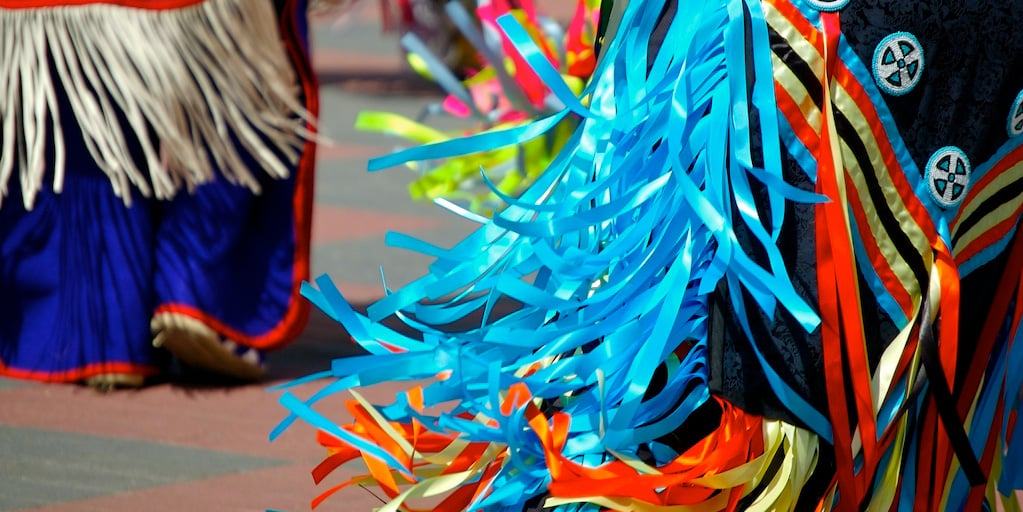Resource Revenue Sharing is Not a New Idea
Photo: Shutterstock Canada is renowned for the wealth and diversity of its natural resources and has long relied on royalties from extractive...

While other cultures used wampum, this article is primarily about the Haudenosaunee usage.
Wampum comes from the Algonquin word “wampumpeage” meaning “white string of beads”. Originally, wampum came in two colours - white and purple.The white bead, the true wampum.
While wampum have always had great significance in the Haudenosaunee culture, interestingly neither of these sea creatures were found in Haudenosaunee territory. The Haudenosaunee traded flint, furs and other items with the Algonquins for the shells.

Each bead, is made from the shell of the whelk sea snail and the purple bead is from the shell of the quahog, a North Atlantic saltwater clam. Each colour portrays strong symbolism - white is the symbol of health, peace and prosperity while purple represents hostility, disease, death and sorrow.
As you can imagine, making beads from shells was an exacting process. The shell had to be broken into small pieces which were then drilled with a reed or stone drill before being rubbed against stone to create a smooth, cylindrical shape. The beads were strung on sinew or plant fibres and worked into patterns. Some of sashes or belts were up to six feet long - imagine the number of beads and time required to create each belt - the Hiawatha belt, circa 18th century, for example contains 6574 beads!
Because making wampum was such a time intensive procedure, the beads were highly valued within the Haudenosaunee culture and were used sparingly to create belts to commemorate great events, to preserve history,, to declare peace or war, to record elections, and to heal families from the pain of losing a family members. The messages conveyed in the belts were considered law, and were honoured and respected as such.
When European colonists first arrived in North America they did not have a currency - gold or silver were not available for coins, and recognizing wampum as an available currency, they began to use it as a medium of trade. As negotiations and “deals” were increasingly brokered thereby requiring a commemorative belt to be created, the significant spike in demand for beads adversely affected the stocks of the whelk and quahog, thereby driving up their value further. In 1641, the Massachusetts Bay Colony declared wampum as a legal form of currency. However, a wampum factory built in New Jersey to mass produce counterfeit wampum quickly devalued wampum as currency. Wampum remained a currency until 1792 when the United States established a coinage currency and laws.
The decrease in availability of quahog and whelk shells had an adverse impact on Haudenosaunee culture in many ways, one being the traditional burial ceremony. In order to prepare the dead for their journey to the new world, the Haudenosaunee had traditionally supplied the spirit of the dead with crucial items, including wampum, to take on their journey. Sadly, due to the huge demand by the Europeans, the shells were no longer readily available so wampum was no longer included in this most sacred ceremony.
Today, fortunately, wampum is being made in the traditional way, by hand, by Cayuga Faithkeeper Ken Maracle. His beads are woven into belts, thereby keeping the tradition.
If you enjoy articles of a historical nature, we thought you might enjoy this one on the potlatch.
Our free, weekly newsletter is a great source of articles such as the above. If you would like to receive it, sign up here. We make unsubscribing easy if you later change your mind.

Photo: Shutterstock Canada is renowned for the wealth and diversity of its natural resources and has long relied on royalties from extractive...
"The art of consensus decision making is dying. We are greatly concerned that Aboriginal people are increasingly equating ‘democracy’ with the act...

James B. (Jamie) Wilson, B.A., U.S.T.C., M.Ed. is the Commissioner, Treaty Relations Commission of Manitoba In an Opaskwayak Cree Nation family...